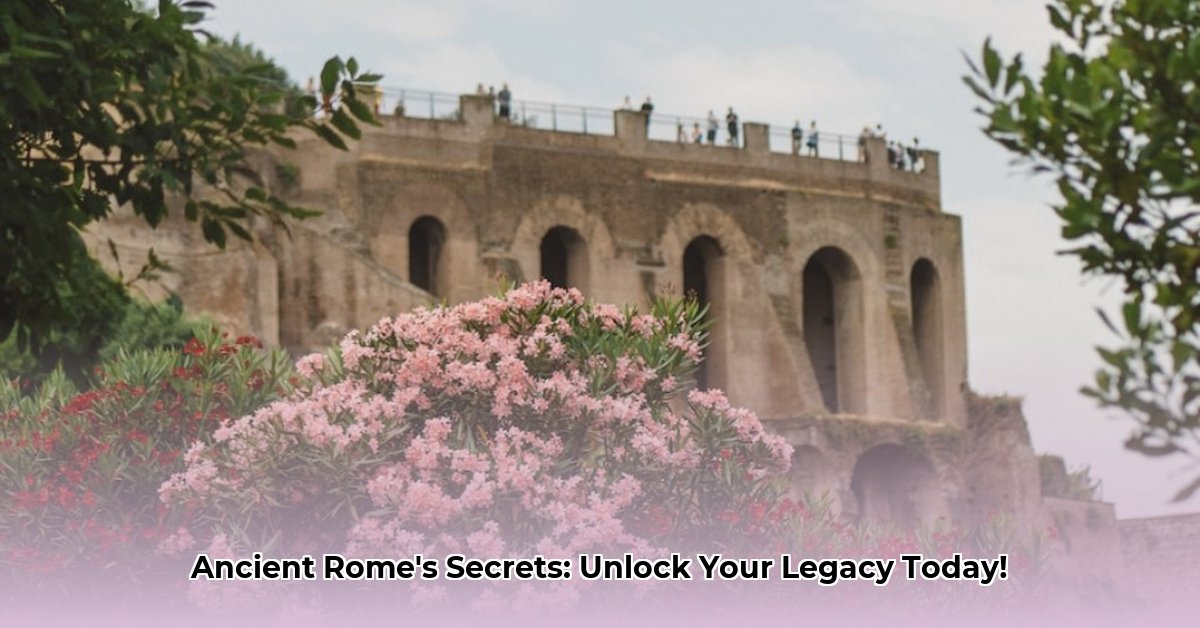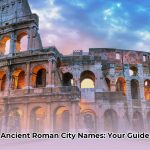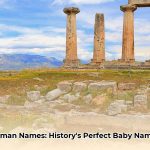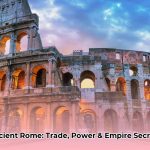The Roman Empire, a civilization of unparalleled ingenuity and strategic foresight, left an indelible mark on human history, profoundly influencing urban development, legal systems, military strategies, and even the daily technologies we often take for granted. Far from merely inventing, Rome excelled at innovating, taking existing concepts and scaling them to unprecedented levels of efficiency and impact. Learn more about Roman achievements here. This article delves into their most significant achievements, demonstrating how their timeless principles offer actionable insights for addressing contemporary challenges across engineering, law, governance, and business.
The Pillars of Roman Genius: Engineering, Law, and Governance
The extraordinary feats of ancient Rome resonate through time, shaping our modern world in ways both overt and subtle. Understanding these ancient innovations provides a unique lens through which to view current global challenges, inspiring solutions rooted in their enduring legacy.
Roman Engineering: Constructing a Civilization to Last Millennia
How did an ancient civilization manage widespread trade, communication, and sustain vast urban populations so effectively? The answer lies in Roman engineering, a testament to their mastery of large-scale construction and practical application.
The Arteries of Empire: Roman Roads
Roman roads were far more than simple pathways; they were the empire’s meticulously engineered arteries, designed for unparalleled durability and strategic purpose. Spanning over 400,000 kilometers (approximately 250,000 miles) by 200 AD, these roadways were constructed with multiple robust layers—from compacted gravel and sand to meticulously fitted paving stones—ensuring longevity that saw many sections remain in use for centuries, some even to this day. They facilitated rapid military deployment, enabling legions to cover up to 25 miles a day, and boosted internal trade by connecting major cities, military outposts, and trade routes. Roman engineers prioritized straight routes, conquering formidable geographical challenges through tunnels and bridges, and incorporated features like mile markers and drainage systems. This commitment to longevity and efficiency provides a powerful model for modern infrastructure development.
- Actionable Insight for Civil Engineers: Modern infrastructure projects should prioritize long-term durability and low-maintenance design, drawing lessons from Roman methods of material layering and strategic alignment. Integrating sustainable practices, such as the use of durable local materials, can significantly enhance project longevity and reduce environmental impact.
Lifelines of the City: Roman Aqueducts
One of the most remarkable engineering achievements was the aqueduct system. While basic water channels existed in earlier civilizations, the Romans perfected and scaled these systems, creating vast, interconnected networks that sustained massive urban populations. These impressive structures, consisting of a system of channels, tunnels, and arches, used the consistent downhill flow of gravity to deliver fresh water from distant sources to bustling urban centers. This innovation dramatically improved public health and sanitation, supplying not only drinking water but also public baths, fountains, and private villas. The Aqua Virgo, for instance, constructed in 19 BC, still feeds Rome’s iconic Trevi Fountain, demonstrating the enduring efficiency of their design.
- Actionable Insight for Urban Planners: Employ Roman principles of comprehensive water management to design resilient and efficient urban water systems. Focus on integrating gravity-fed networks where feasible and prioritize robust infrastructure that can adapt to population growth and climate change, ensuring public health and sustainable urban development.
The Unshakable Foundation: Roman Concrete
Roman concrete (Opus caementicium) was a revolutionary building material that allowed for the construction of monumental structures like the Pantheon and the Colosseum, which have captivated audiences for millennia. Its strength and remarkable durability stemmed from a unique recipe: a mixture of volcanic ash known as pozzolana, lime, and aggregate. Pozzolana imbued the concrete with unique hydraulic properties, enabling it to set even underwater and effectively endure chemical decay. This innovation facilitated unprecedented architectural scale and longevity, proving superior to many modern concrete formulations and significantly more environmentally friendly.
- Actionable Insight for Architects and Material Scientists: Investigate the chemical compositions of Roman concrete for insights into developing more durable, sustainable, and environmentally friendly building materials. Explore the potential of naturally occurring additives to enhance modern concrete formulations, minimizing environmental impact while maximizing structural integrity.
The Bedrock of Justice: The Roman Legal System
What civilization laid the most impactful groundwork for our modern understanding of justice and governance? The Roman legal system, a cornerstone of Western jurisprudence, introduced groundbreaking principles that continue to resonate universally.
Foundational Principles of Law
Roman law was founded on the ideas of justice, fairness, and the rule of law. It emphasized the importance of written laws and legal procedures, ensuring that everyone was subject to the same laws and entitled to a fair trial. Revolutionary concepts such as “innocent until proven guilty” and “equality before the law” originated in Rome, fundamentally shaping legal systems today. The earliest codified laws were compiled in the “Twelve Tables” around 450 BC, covering aspects like property, religion, and divorce, and were displayed publicly for all citizens to see. Later, the Corpus Juris Civilis (Body of Civil Law), compiled under Emperor Justinian between 529 and 535 AD, became a monumental synthesis of Roman law, serving as a foundational text for legal scholars worldwide and influencing civil law systems across Europe and beyond.
- Actionable Insight for Legal Scholars and Policymakers: Continuously analyze and refine legal frameworks, promoting principles of fairness, transparency, and accessibility in modern jurisprudence. Examine the historical evolution of civil rights through the lens of Roman legal principles to inform contemporary legal reforms and ensure equal justice for all citizens.
Representative Government: A Seed for Democracy
The Roman Republic revolutionized governance by establishing a system where eligible male citizens had the right to vote and elect officials (such as consuls) to represent their interests. This innovative approach to shared governance, with institutions like the Senate and popular assemblies, ensured broader participation and accountability. While not a full democracy by modern standards, it set a crucial precedent for many of today’s democratic systems, profoundly shaping the course of political history and fostering civic engagement.
- Actionable Insight for Governance Leaders: Strengthen democratic institutions and processes by fostering greater transparency, accountability, and citizen engagement. Study the Roman Republic’s evolution to understand how systems of representation can adapt to promote balanced governance and prevent autocratic tendencies.
Architecture and Urban Planning: Form, Function, and Foresight
Roman architecture stands as a testament to their mastery of concrete, arches, vaults, and domes. They revolutionized construction methods, incorporating elements from Greek and Etruscan influences while introducing their own innovations. The Pantheon, with its impressive unreinforced concrete dome, and the Colosseum, a massive amphitheater utilizing a complex system of arches and vaults, showcase their unparalleled understanding of both aesthetics and functionality.
Grid-Based City Planning
While not the inventors of grid-based city planning, the Romans embraced and standardized this concept on an unprecedented scale. Their colonial cities and military camps throughout the empire, from Britain to North Africa, featured a nearly perfect orthogonal layout of streets, with two main thoroughfares, the cardo and decumanus, crossing at right angles. This systematic approach facilitated efficient organization of housing, markets, and public spaces, creating highly functional and orderly urban environments.
- Actionable Insight for Urban Planners: Utilize grid-based planning principles for efficient urban expansion and organization. Incorporate public spaces, green areas, and recreational facilities within city grids to enhance livability and avoid monotony, mirroring Roman emphasis on both functionality and quality of life.
Sophisticated Sanitation Systems
The ancient Roman Empire boasted one of the highest levels of sewage and sanitation management in the contemporary world. They established extensive networks of public baths, latrines, and interlinked sewer lines that ran along city streets. The abundance of water from aqueducts was regularly used to flush these drains, leading waste into nearby rivers. They also pioneered public toilet systems, levying a tax for their use which funded cleaning and upkeep. This sophisticated approach to public health was centuries ahead of its time.
- Actionable Insight for Public Health Officials: Prioritize comprehensive urban sanitation and waste management systems. Invest in robust infrastructure that supports public health, drawing inspiration from ancient Roman commitment to clean water and efficient waste removal in densely populated areas.
| Areas | Roman Achievement | Modern Application |
|---|---|---|
| Infrastructure | Roads and Aqueducts | Sustainable infrastructure design, ensuring efficient transportation networks and resilient water systems, vital for urban planning and national development. |
| Law | Legal System (e.g., “innocent until proven guilty,” Corpus Juris Civilis) | Ongoing analysis and refinement of legal frameworks, promoting fairness, accessibility, and the rule of law in modern jurisprudence and international relations. |
| Governance | Representative Government (Roman Republic) | Strengthening democratic institutions and processes, fostering transparency, accountability, and citizen engagement to ensure stable and equitable societies. |
| Construction | Architecture and Engineering (Concrete, Arches, Domes) | Development of durable, sustainable, and environmentally friendly building materials and techniques, minimizing environmental impact while maximizing structural integrity. |
| Urban Planning | Grid-based Cities, Sanitation Systems | Designing efficient, livable, and healthy urban environments through systematic planning, robust sanitation infrastructure, and integration of public amenities. |
The true brilliance of Rome resided not necessarily in inventing every concept from scratch, but in their extraordinary capacity to adapt, refine, and scale existing ideas. They gleaned inspiration from diverse cultures, including the Etruscans and Greeks, then effectively improved and implemented these innovations across their vast civilization. Their long-term socio-economic impact underscores the mechanisms that drove their historical success and their lasting effects on modern methodologies.
Mastering Practicality: How Romans Improved Technologies
The Romans were masters of practical application. Their ingenuity lay in taking existing ideas, often borrowed from other cultures, and refining them to an unprecedented scale and efficiency. This ability to adapt and scale enabled them to build an empire that lasted over a millennium. Understanding these processes offers significant insights for contemporary innovation.
- Key Takeaways:
- Roman ingenuity excelled in adapting and scaling existing technologies, not always inventing them.
- Their innovations in civil engineering, military technology, and social infrastructure left an enduring global legacy.
- Roman concrete, aqueducts, and roads exemplify remarkable engineering prowess and strategic planning.
- Roman legal principles and early welfare programs significantly influenced modern governmental and judicial systems.
- A deeper study of Roman technology provides actionable insights for contemporary innovation and problem-solving.
Beyond Physical Structures: Other Roman Innovations
The Roman Calendar: A Timeless Alignment
The modern Gregorian calendar is modeled very closely on the Roman Julian calendar, which dates back more than 2,000 years. Earlier Roman calendars were inconsistent, operating around lunar cycles and often adjusted based on superstitions (e.g., ensuring months had an odd number of days). In 46 BC, Julius Caesar, with astronomer Sosigenes, instituted the Julian system, aligning the calendar with the solar year (365 days, with a leap year every four years). While it miscalculated the solar year by 11 minutes, leading to the later adoption of the Gregorian calendar in 1582 AD, it remains a testament to Roman efforts to standardize timekeeping for imperial administration and daily life.
- Actionable Insight for Data Scientists and System Architects: The Roman pursuit of accurate timekeeping underscores the importance of standardized data and precise chronological systems in managing complex operations. Modern systems can draw from this historical drive for accuracy to ensure robust data integrity and synchronized global operations.
From Scrolls to Codices: The Birth of the Book
For most of human history, literature took the form of unwieldy clay tablets and scrolls. The Romans streamlined this medium by creating the codex, a stack of bound pages that is recognized as the earliest incarnation of the modern book. Initially made from bound wax tablets, these were later replaced by animal skin parchment, more closely resembling pages. This innovation significantly improved readability, portability, and storage, and was quickly adopted by early Christians for producing copies of the Bible.
- Actionable Insight for Information Management Professionals: The transition from scrolls to codices highlights the enduring value of user-friendly information organization. Modern digital platforms should prioritize intuitive navigation and accessible formats, mimicking the codex’s efficiency in information retrieval and dissemination.
Early Welfare Programs: A Social Safety Net
The Romans experimented with early forms of social welfare, reflecting an evolving sense of social responsibility. The lex frumentaria (grain law), instituted in 122 BC by Gaius Gracchus, provided subsidized grain to citizens, an early form of state-supported food security. Later, Emperor Trajan implemented “alimenta” (nourishment), a program specifically designed to feed, clothe, and educate orphans and poor children. While their long-term economic impacts are still debated, these programs demonstrate a commitment to social stability and urban welfare, often distributed via tokens called “tesserae.”
- Actionable Insight for Public Policy Developers: Examine historical welfare initiatives like the Roman alimenta to inform contemporary social safety net programs. Analyze their effectiveness, sustainability, and impact on societal stability to design comprehensive support systems that address modern poverty and inequality.
Acta Diurna: Pioneering Public News
The Romans were pioneers in circulating official public announcements. The Acta Diurna, or “Daily Events,” were handwritten news sheets published daily by the government from 59 BC to around 222 AD. Posted in heavily trafficked areas like the Roman Forum, these “daily acts” provided news on military victories, legal proceedings, gladiatorial games, birth and death notices, and even human-interest stories. The Acta Senatus recorded Senate proceedings, made accessible to the public by Julius Caesar. These early newspapers represent a foundational step in the history of public information dissemination.
- Actionable Insight for Communication Strategists: The Acta Diurna exemplify the power of transparent and consistent public information. Modern governments and organizations should prioritize clear, accessible, and regular communication channels to foster public trust and engagement, drawing from lessons in historical public discourse.
Why Roman Military Prowess Still Matters Today
The Roman military’s enduring success was rooted in its adaptable organization, sophisticated logistics, formidable resilience, and astute psychological strategies. These elements continue to offer invaluable lessons for modern military doctrines, strategic thinking, and even business leadership.
- Key Takeaways:
- Roman military success derived from highly adaptable organization and sophisticated logistical capabilities.
- Their emphasis on resilience and strategic psychological operations significantly shaped modern military practices.
- Enduring legacies include principles of strategic thinking, ethical considerations in warfare, and effective integration of conquered territories.
The Disciplined Machine: Organization and Strategy
The Roman army achieved unparalleled dominance for centuries due to its highly structured, disciplined, and adaptable organization. The modular legionary system, composed of thousands of well-trained soldiers, allowed for flexible deployment and efficient combat operations. Formations like the “testudo” (tortoise formation), where soldiers interlocked shields, provided exceptional defensive capabilities against missile attacks. Beyond battlefield tactics, the Romans excelled in siege warfare, constructing sophisticated engines and techniques to breach fortified walls.
- Actionable Insight for Military Strategists: Modern forces should prioritize creating modular units capable of operating independently yet integrating seamlessly into larger, complex formations for diverse missions. This adaptability mirrors the Roman legion’s flexibility, crucial for contemporary multi-domain operations.
The Unsung Heroes: Logistics and Military Medicine
Effective logistics, encompassing meticulous road construction, efficient resource distribution, and strategic supply lines, proved absolutely vital for Roman military expeditions. This robust logistical network enabled them to maintain distant supply lines and sustain prolonged campaigns across vast territories.
Furthermore, the Romans made significant advancements in military medicine. Under Augustus, a military medical corps was established, one of the first dedicated field surgery units. Specially trained medics saved countless lives through innovations like hemostatic tourniquets and arterial surgical clamps to curb blood loss. They also performed physicals on new recruits, oversaw sanitation in military camps, and even disinfected instruments in hot water before use—pioneering a form of antiseptic surgery not fully embraced until the 19th century. Roman soldiers often lived longer than average citizens due to this advanced medical care.
- Actionable Insight for Policymakers and Business Leaders: Governments must continue to invest strategically in robust national infrastructure and logistical capabilities, essential for both military readiness and national economic resilience. Business leaders can apply Roman logistical principles to optimize supply chains, manage resources, and ensure operational continuity in complex environments.
The Art of Control: Psychological Warfare and Integration
Beyond conventional battlefield tactics, the Romans astutely understood the immense power of psychological warfare. They judiciously employed calculated fear and intimidation to subdue enemies and maintain control over vast territories, often offering paths to integration (citizenship) for those who submitted. This strategic blend of force and inclusion was key to their long-term imperial stability.
The Roman model for integrating conquered territories offers pragmatic lessons for policymakers today. The delicate balance between maintaining military control and fostering civic integration—often through the spread of Roman law, language (Latin), and infrastructure—proved crucial for achieving long-term stability across their diverse empire.
- Actionable Insight for Policy and Diplomatic Leaders: Contemporary strategists should rigorously analyze the ethical implications of psychological operations, striving for a balance between strategic advantage and adherence to evolving international standards of engagement. When intervening in foreign territories, carefully consider the long-term political and social consequences, drawing guidance from Rome’s historical successes and failures in fostering sustainable peace and integration.
The enduring echoes of Rome’s legions resonate on today’s battlefields and in boardrooms, fundamentally underscoring “Why Roman Military Prowess Still Matters Today.”
Impact on Governance: How Roman Roads and Aqueducts Forged an Empire
The Roman Empire’s ability to govern effectively over vast territories was inextricably linked to its sophisticated infrastructure. Roads and aqueducts were not merely engineering feats; they were instruments of imperial control, economic prosperity, and cultural unification, demonstrating a clear vision for centralized administration.
The Backbone of Governance: Roman Roads
Imagine trying to manage a colossal empire without efficient transportation—it would be impossible. The Romans inherently understood this, making their roads absolutely vital for governance. These expertly engineered routes enabled rapid troop deployment, boosted internal trade by facilitating the movement of goods and resources, and fostered cultural exchange across diverse regions. They served as tangible symbols of Roman dominance and imperial reach, allowing central authority to project power and maintain order efficiently. A complex network of post houses along these roads ensured that messages and intelligence could be relayed with astonishing speed, linking the furthest reaches of the empire to Rome.
- Actionable Insight for Civil Engineers and Policymakers: Modern governments can gain valuable insights by studying Roman techniques for durable and sustainable infrastructure design, prioritizing longevity and efficiency over short-term solutions. Strategic investment in transportation networks is a direct means to boost economic activity, improve administrative efficiency, and foster national cohesion.
The Lifeline of Order: Roman Aqueducts
For any civilization to thrive and for central governance to maintain control, access to fresh water is non-negotiable. Roman aqueducts were more than just water carriers; they were the very lifelines for urban centers, directly impacting the ability to govern by sustaining large populations and ensuring public health. By consistently providing clean drinking water, these systems dramatically improved public health, supported larger populations, and facilitated urban growth. This in turn contributed to social stability, making cities more manageable and less prone to disease outbreaks that could destabilize governance.
- Actionable Insight for Urban Planners and Public Health Officials: Modern cities should apply Roman principles of comprehensive water management, focusing on efficient distribution and resilient systems that can adapt to climate change and population growth. Prioritizing access to clean water is a fundamental aspect of stable governance and public welfare.
Augustus’s Vision: Prosperity Through Infrastructure and Sound Policy
Emperor Augustus grasped a fundamental truth: a prosperous populace is inherently a peaceful and stable one. He strategically invested heavily in public infrastructure to profoundly enhance the quality of life for Roman citizens. His visionary leadership, combined with the efforts of a talented and diverse team of engineers and administrators, ensured these ambitious projects were successful. His formula was clear: deliver tangible prosperity through infrastructure and sound economic policies, and you will secure lasting peace and public loyalty. This included standardizing coinage, establishing a stable tax system (aided by census data), and focusing on internal security.
The Romans keenly recognized the transformative importance of critical infrastructure projects. Their extensive networks of roads and innovative water systems, coupled with effective legal and administrative frameworks, allowed Rome to flourish and maintain its vast domains for centuries. Policymakers must recognize that substantial infrastructure projects yield very real, measurable benefits for the citizens within a country, fundamentally impacting their daily lives, national prosperity, and the effectiveness of governance itself.










